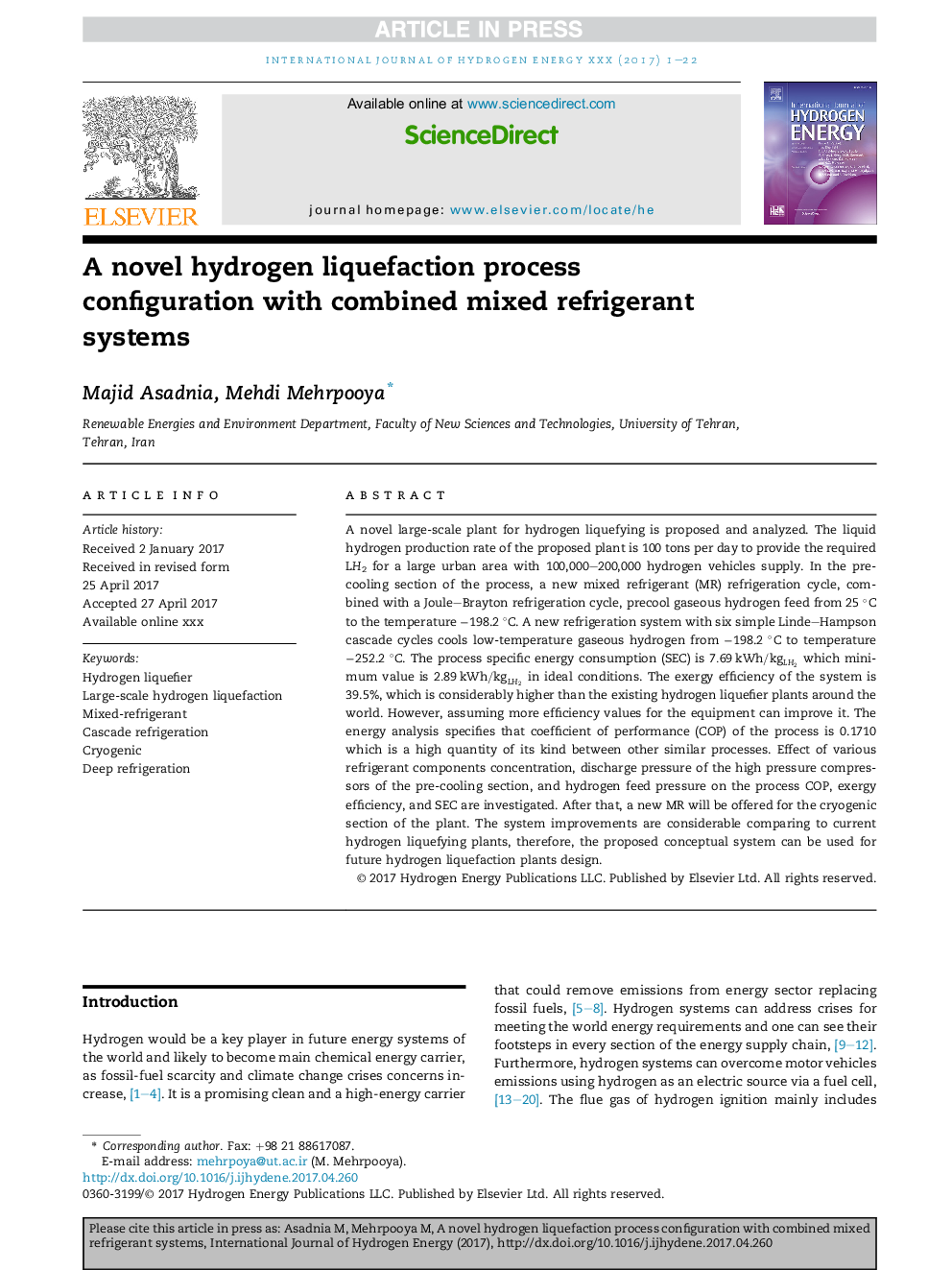| Article ID | Journal | Published Year | Pages | File Type |
|---|---|---|---|---|
| 5146583 | International Journal of Hydrogen Energy | 2017 | 22 Pages |
Abstract
A novel large-scale plant for hydrogen liquefying is proposed and analyzed. The liquid hydrogen production rate of the proposed plant is 100 tons per day to provide the required LH2 for a large urban area with 100,000-200,000 hydrogen vehicles supply. In the pre-cooling section of the process, a new mixed refrigerant (MR) refrigeration cycle, combined with a Joule-Brayton refrigeration cycle, precool gaseous hydrogen feed from 25 °C to the temperature â198.2 °C. A new refrigeration system with six simple Linde-Hampson cascade cycles cools low-temperature gaseous hydrogen from â198.2 °C to temperature â252.2 °C. The process specific energy consumption (SEC) is 7.69kWh/kgLH2 which minimum value is 2.89kWh/kgLH2 in ideal conditions. The exergy efficiency of the system is 39.5%, which is considerably higher than the existing hydrogen liquefier plants around the world. However, assuming more efficiency values for the equipment can improve it. The energy analysis specifies that coefficient of performance (COP) of the process is 0.1710 which is a high quantity of its kind between other similar processes. Effect of various refrigerant components concentration, discharge pressure of the high pressure compressors of the pre-cooling section, and hydrogen feed pressure on the process COP, exergy efficiency, and SEC are investigated. After that, a new MR will be offered for the cryogenic section of the plant. The system improvements are considerable comparing to current hydrogen liquefying plants, therefore, the proposed conceptual system can be used for future hydrogen liquefaction plants design.
Keywords
Related Topics
Physical Sciences and Engineering
Chemistry
Electrochemistry
Authors
Majid Asadnia, Mehdi Mehrpooya,
